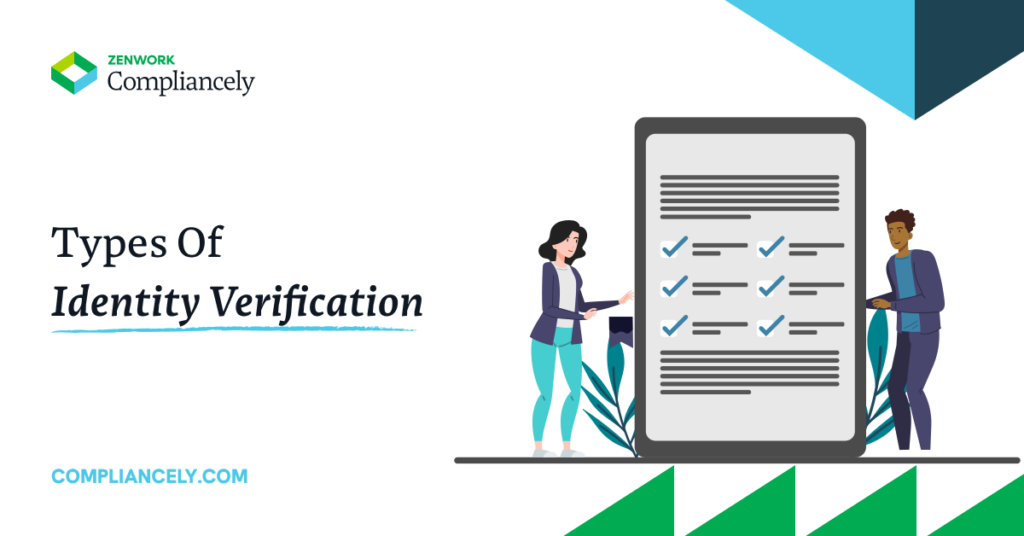Types Of Identity Verification

Businesses often onboard a variety of profiles. These profiles could be customers, vendors, partnering companies, recruits, or associates. Businesses in banking, financial services, insurance, healthcare, and other industries observe an influx of profiles.
Be it vendor onboarding or customer onboarding, there is an intangible element of risk associated with the profile onboarding operations. And when the identities of profiles are not properly verified, there could be consequences.
This is why businesses are open to trying and exploring a variety of identity verification methods to ensure that the KYC processes sieve high-risk profiles and retain quality, low-risk profiles.
The following will discuss a variety of identity verification methods in detail and provide insights into choosing a method that would best fit your use case.
Knowledge-Based Identity Verification
Knowledge-based authentication (KBA) is an identity verification method that utilizes the responses of the user to verify the identity. Think of password recovery questions that certain platforms ask you to help you recover your password. “What is the name of your very first pet?”
The responses to security questions are recorded during the initial onboarding process. These questions are easy enough for the intended user to remember but complex enough for other parties to crack.
KBA is one of the most popular and easiest identity verification methods used by businesses because customers find this authentication method to be easy, reliable, and safe.
The drawback to this method is that social engineering, public records, and social media could allow hackers and data interceptors to find leads to sensitive information and hack into the user accounts, compromising security.
Two/Multi-Factor Authentication Verification
This identity verification method requires the user to enter a security code sent to their mobile phone number and/or email address. This is one of the most-used identity verification methods popular for its quick and simple approach.
This is extremely appealing to businesses that operate virtually or digitally. For example, mobile banking, neo banking, cryptocurrency exchanges, and other digital businesses use two-factor or multi-factor authentication verification to make sure that the registered customer is accessing their account securely.
The main drawback to this method is that many hackers pretending to be representatives of reputable organizations ask for the security code from the customer in order to gain unlawful access to their accounts. Many customers fall prey to this and lose all access to their account(s).
Database-First Identity Verification
This identification method allows the business to validate the identities of individuals or entities per the authorized databases and sources. Verifying the identification details per the official records enables the businesses to assess risk and validate the credibility of a profile.
For example, the KYC process of a bank requires the customers to submit certain identification details and proof of identity during the onboarding process. These details include name, address, social security number or taxpayer identification number, and other information.
The bank then proceeds to identify and validate the details per the federal records to ensure that the submitted information and the federal records match. Due diligence provides additional insights to help you identify your customers thoroughly.
When you choose this method to validate profiles, here are a few things to pay attention to.
- Do the records match?
- Are the records current or historic?
- Do the records show that the profile is in good standing with the federal agencies?
- Is the source of these results legit?
Compliancely, a real-time identity verification API infrastructure allows you to identify, validate, and verify the identities of individuals and entities per the official federal records.
With 17+ checks, your KYC processes are powered with real-time identity checks that enable you to identify and approve thousands of profiles in a few minutes.
Biometric Verification
This identity verification method requires businesses to record the physical characteristics of individuals, such as fingerprints, voice, hair follicle, iris and retina, facial features, and other characteristics. Technically, the process of recording, identifying, and validating these characteristics is called biometric verification.
High-security protocols use this verification method to help enhance security. Most business spaces use this verification method to enable simplified employee management and visitor management as well.
Although it might seem unlikely, biometrics can be stolen. There have been many instances in recent history where the fingerprints of individuals were saved and stolen for fraudulent use.
Credit Bureau-Based Identity Verification
A credit bureau is a customer data collection agency that records the spending and loaning patterns of customers, allowing financial institutions to run due diligence checks on customers and assess risk.
Banks, lending institutions, finance businesses, and others leverage credit bureau-based identity verification methods to validate customers and avoid high-risk profiles.
Information, such as the name, contact information, address, social security number, and other information is stored by these institutions, allowing businesses to verify the identities of their applicants prior to approvals and onboarding.
This method is especially useful for businesses in the lending industry, where the loan repayment capabilities and patterns of consumers are observed and recorded. This, however, does not compromise the consumer user experience.
Online Identity Verification
This identity verification method requires the user to submit a picture of them holding their government-issued identity card. This allows the business to ensure that the person holding the ID card is the same as the person to whom the ID card belongs.
While this is a pretty simple method to verify and onboard customers, it creates certain inertia. Customers may find the process of holding their ID card for a verification step intrusive.
Do you think there’s a better approach to identity verification that is convenient, simple, and cost-effective?
